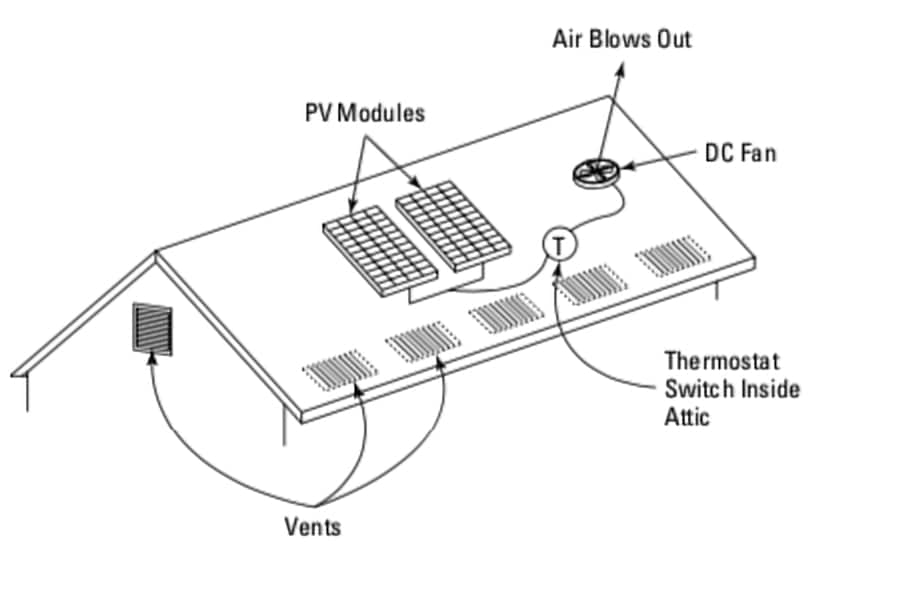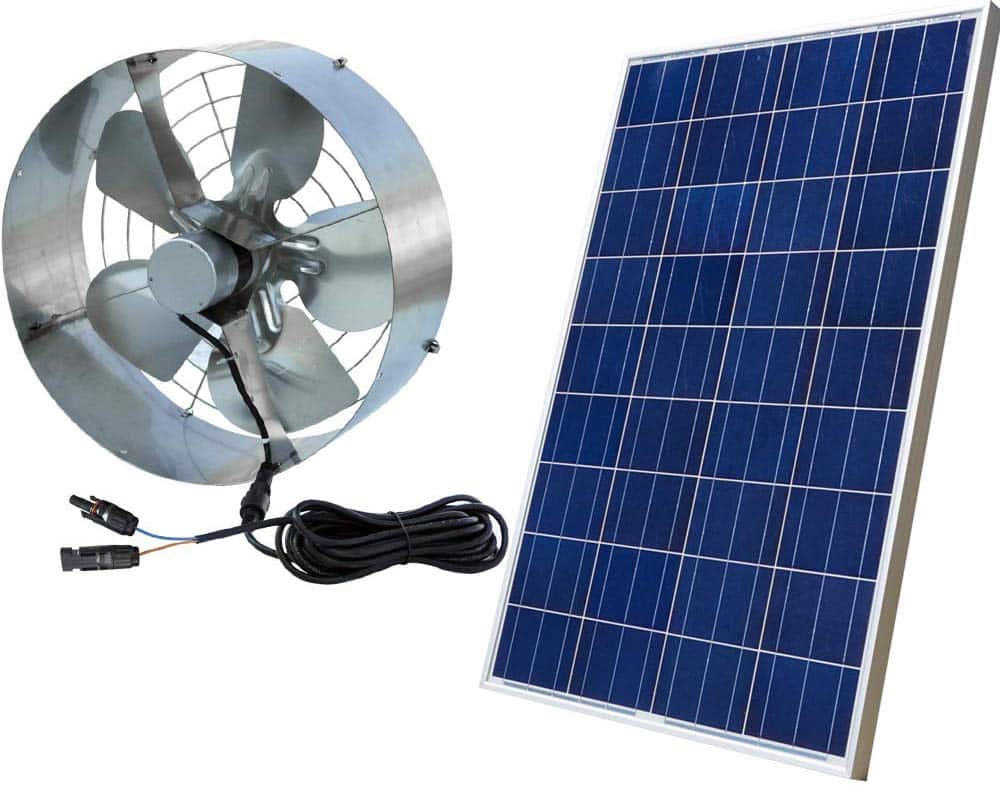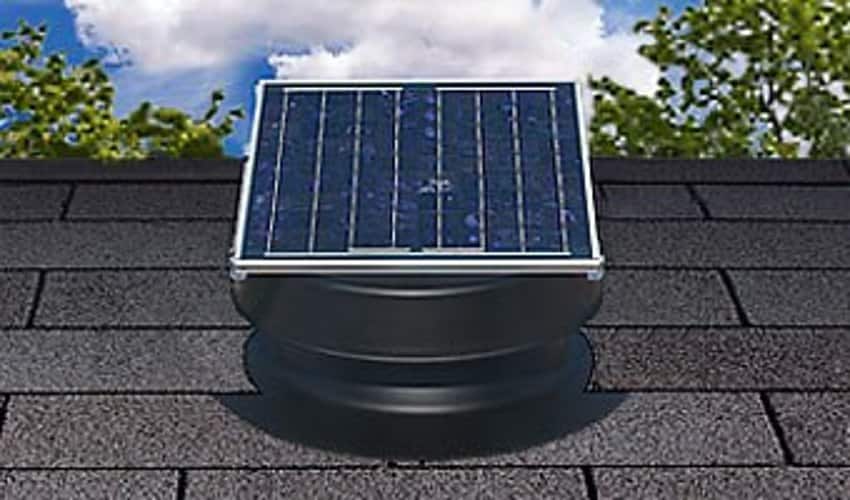In contrast with the whole house fan, an attic vent fan draws air in from one part of the attic, and out another. There is no air movement inside the house below; hence attic vent fans can be run when the house is closed up when the air conditioner is on.
The advantage of solar power is that it eliminates the need for expensive electrician labour or county building permits to install hardwiring. For example, in a remote shed, you'd have first to get building permits to run household electrical power to the site. Then you'd have to dig a deep trench for the electrical conduit and hire an electrician to run the pipe and connect to your fuse box. The electrician would also have to configure switch boxes, switches, and another code wiring, finally culminating with a junction box where the fan needs to hang. The cost of such a project can run well over $2,000, not to mention the fan itself. On the other hand, a complete do-it-yourself solar fan system might cost $300.
Greenhouses are an excellent application as well because they generally don't need electrical power for any reason other than driving fans to cool the air in the summer. Solar-powered fans are ideal because there's no need for expensive electrical wiring. Plus, they're safer because they run off of low, DC voltages. Greenhouses are often wet and humid, creating shock hazards with conventional wiring schemes.
Installing Solar Attic Vent Fan
Attics can get to be over 160°F in the hot summer sun. This heat migrates down via conduction through your ceiling and into your house. Even in the middle of the night, a poorly ventilated attic stays very hot. If you can somehow manage to purge the air in your attic with outside air continuously, your entire house will be much cooler. This idea is especially true of old houses with poor insulation.
One way to purge an attic is with a whole house fan. If the weather's not too hot out, a whole-house fan can keep air moving through the living space and purge heat from the attic above. But you can't run them when the air conditioner is on because they require the house to be opened up, and they don't have the desired effect when the outside temperature is hotter than the inside. However, attic vent fans can run anytime, regardless of whether the house is opened up or closed off. In particular, when you're running an air conditioner, you want an attic vent to cool the attic as much as possible because that will decrease the workload on the air conditioner (which is very expensive to run). Cover up your attic vent fan in the winter to prevent natural ventilation and keep heat trapped in the attic space.
A solar attic vent fan can be installed anywhere and requires no county permits or electrician labour. The fan runs whenever the sun shines on the PV modules; this makes perfect sense because when the sun is the brightest, you want the most air pumping. The unit comes on only when the set temperature is reached. For the cost and complexity, a solar vent fan may be one of your best solar investments in a hot climate.








Comments